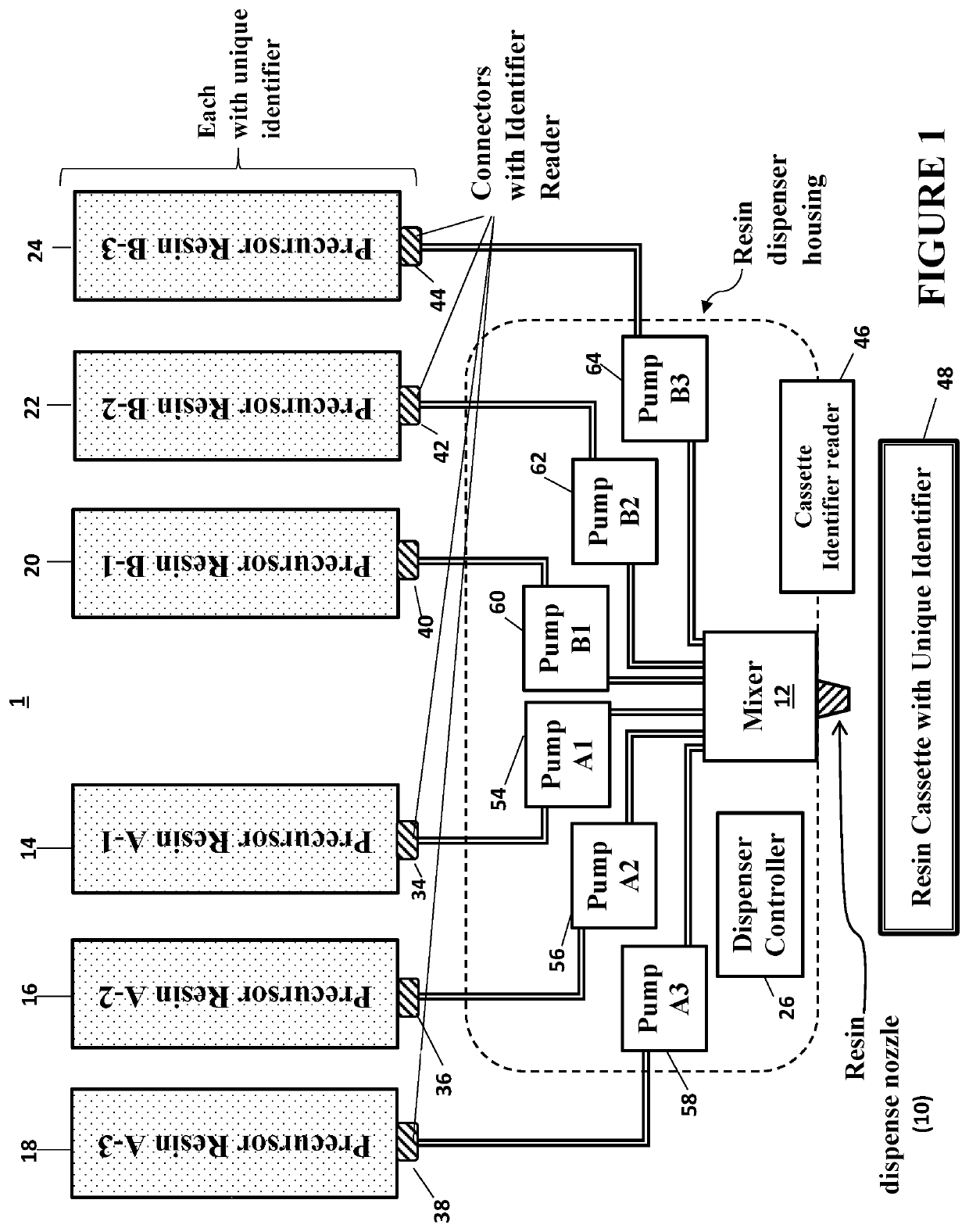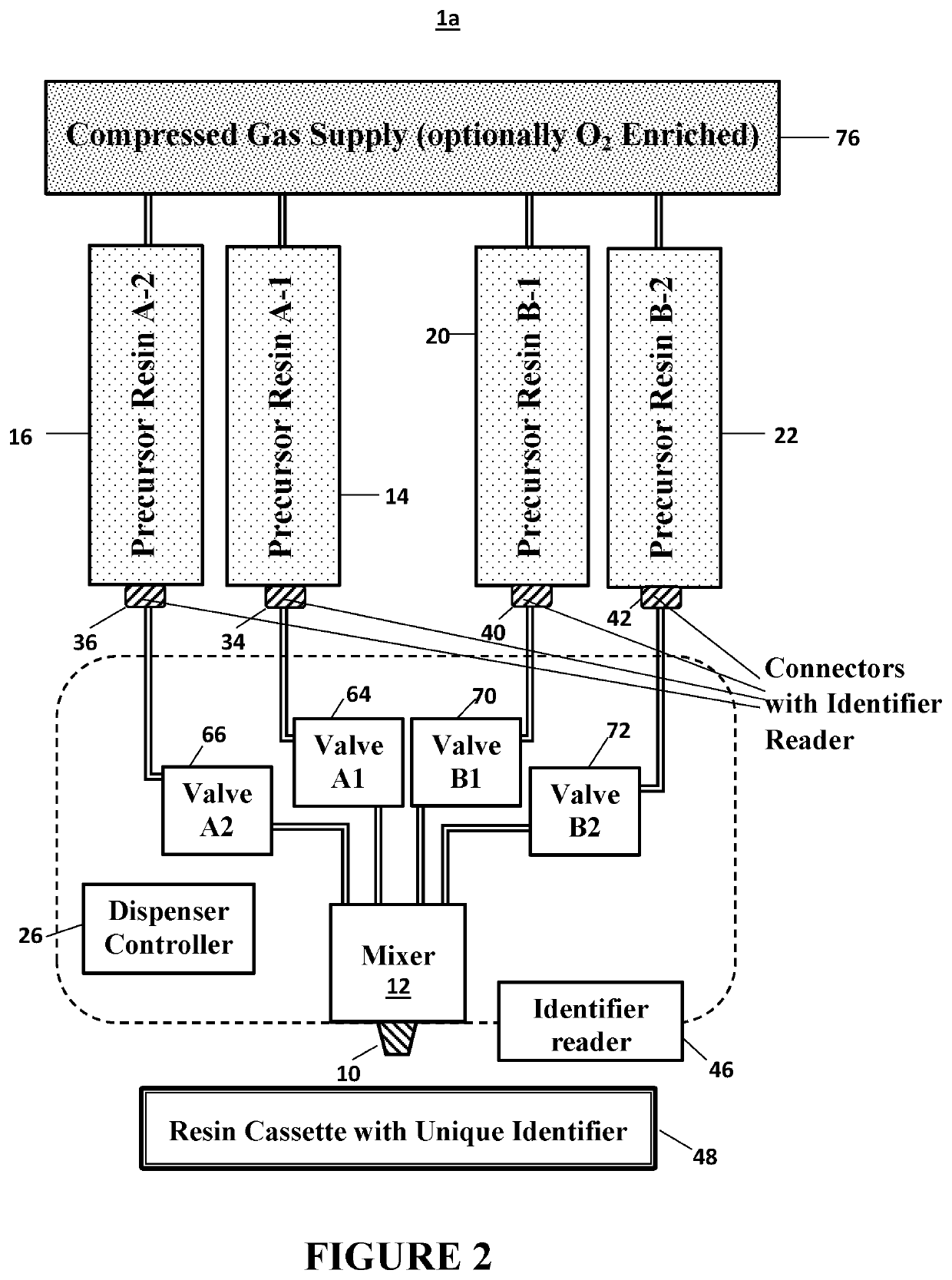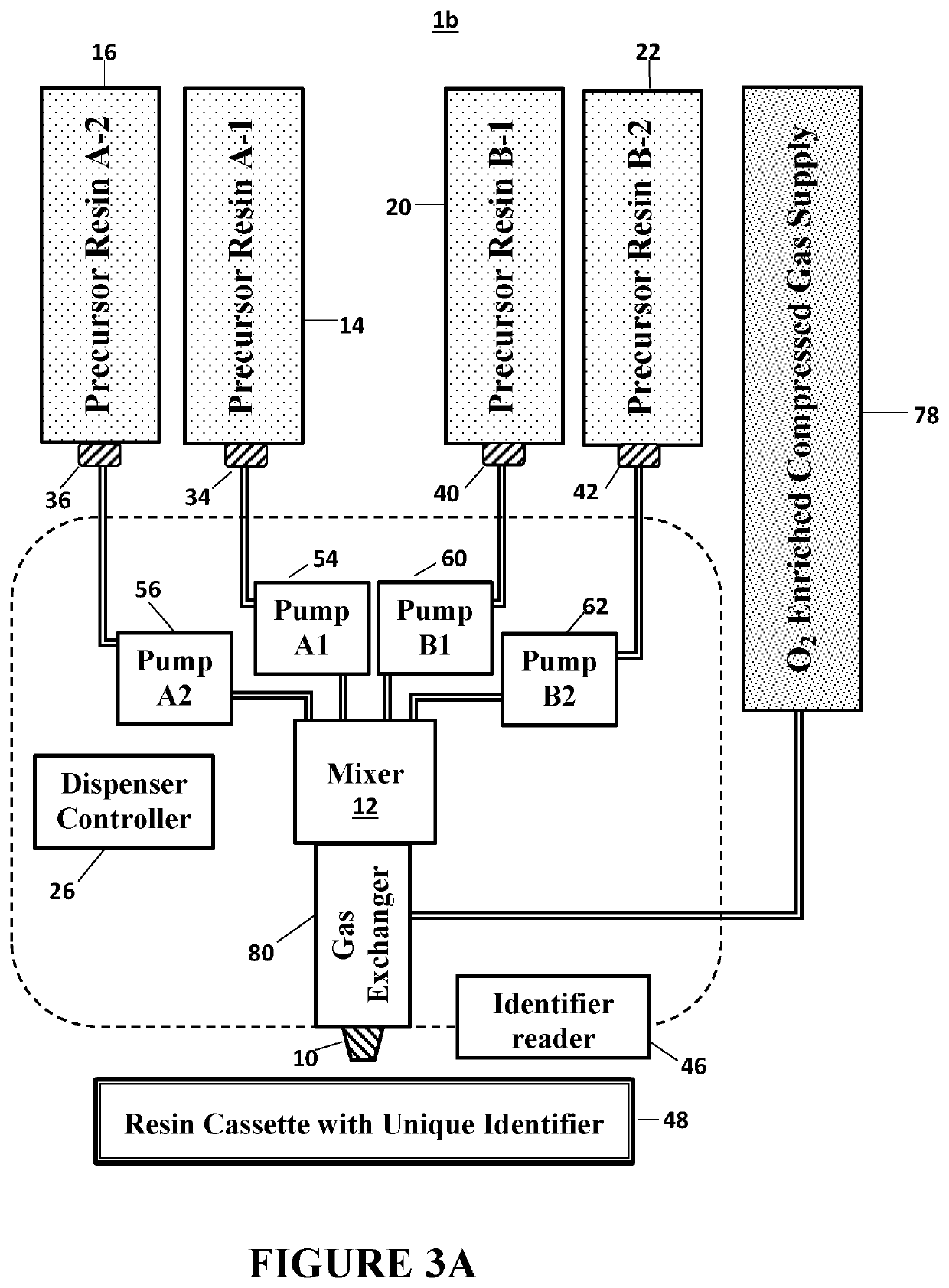Resin dispenser for additive manufacturing
a technology of additive manufacturing and dispensers, applied in the field of additive manufacturing, can solve the problems of general slowness of techniques
- Summary
- Abstract
- Description
- Claims
- Application Information
AI Technical Summary
Benefits of technology
Problems solved by technology
Method used
Image
Examples
examples 1-6
[0114]As discussed below, it was found that, by simply blending two different dual cure resins—for example, one for a rigid polyurethane product, and one for an elastomeric polyurethane product, with both provided in the form of dual precursor resins—parts can be created with mechanical properties intermediate between the two, and with adequate toughness and durometer scores.
[0115]Results of Dynamic Mechanical Analysis (DMA) discussed below gives insight into the glass transition temperature (Tg), heat deflection temperature (HDT), and susceptibility to creep (Tan D) across a temperature range of −100° C. to 200° C., for three different blends, and shows that two different resin systems (RPU70 and EPU40, available from Carbon Inc., 1028 Mills Way, Redwood City, Calif. 94063 USA) can be used to conveniently generate a range of different product properties.
example 1
RPU70+EPU40 Storage Modulus
[0116]FIG. 6 shows the storage moduli for various blends of RPU70 and EPU40. As can be seen, the onset of glass transition for neat RPU70 is 72° C. Further, upon blending EPU40 with RPU70 in 30%, 40%, and 50% ratios (by mass), the glass transition temperature was progressively lowered to 43° C., 37° C., and 31° C. respectively.
example 2
RPU70+EPU40 Room Temperature Storage Modulus
[0117]Upon considering the room temperature storage modulus as shown in FIG. 7, a substantial change in stiffness was seen. From neat RPU70 to a RPU70-EPU40 70%-30% mixture, a drop by half is seen. Further, a drop by roughly 200 MPa for each 10% increase in EPU40 is seen.
PUM
| Property | Measurement | Unit |
|---|---|---|
| diameter | aaaaa | aaaaa |
| diameter | aaaaa | aaaaa |
| diameter | aaaaa | aaaaa |
Abstract
Description
Claims
Application Information
 Login to View More
Login to View More - R&D
- Intellectual Property
- Life Sciences
- Materials
- Tech Scout
- Unparalleled Data Quality
- Higher Quality Content
- 60% Fewer Hallucinations
Browse by: Latest US Patents, China's latest patents, Technical Efficacy Thesaurus, Application Domain, Technology Topic, Popular Technical Reports.
© 2025 PatSnap. All rights reserved.Legal|Privacy policy|Modern Slavery Act Transparency Statement|Sitemap|About US| Contact US: help@patsnap.com



